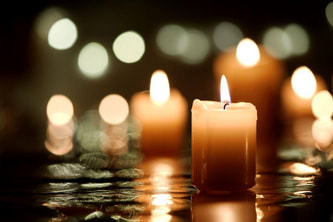 By Pamela Mueggenberg, MA, LMHP, LPC Every few years, popular scientific journals like to write about the “hypersane,” the enlightened breed of individual who has experienced trauma or great suffering, and rather than breakdown they “break through” and become the best versions of themselves and, possibly, anyone else. Carl Jung was termed hypersane after his time as a doctor during World War I, when he broke off his friendship with Freud and began his deeper exploration of the unconscious. Diogenes the Cynic is another such nominee; in an article on hypersanity Neel Burton tells the story of Diogenes strolling through Athens in broad daylight, holding a lit lamp. When asked why he would reply “’I am just looking for a human being’ – thereby insinuating that the people of Athens were not living up to, or even much aware of, their full human potential.” There are absolutely people in this world who have transcended their psychological suffering and arrived at greater clarity, groundedness, and peace. There are also many, many people who are faced with similar trauma (more than 70 million people fought in World War I, with more than 40 million military and civilian casualties) who did not arrive at such peace. Trauma is not a test, and definitely not a gift. Trauma is injury of our mind, body, and spirit when faced with the chaos and violence that exists in the world. We have no right to judge when or how others heal, nor can we rank each other’s ability to move through pain. What if, instead, we assume we are all sane? That we all have worth, even those of us who are still struggling with the weight of our wounds? What if we all commit to helping each other reach a level of peace, hand in hand, unburdened by the (frankly patriarchal) assumption that we need to individually master our own trauma? Celebrated author and educator Lidia Yuknavitch writes in her book The Misfit’s Manifesto, “Death, grief, trauma are alive in our actual bodies. We carry them our whole lives, even if we act like it’s possible to “step out of them.” Writing, making stories, drawing and painting, and making art doesn’t release me from loss or grief or trauma, but it does let me re-story my self and my body. In this sense, to be a misfit means to be willing to dive into the waters of one’s life, swim to the wreckage at the bottom, and bring something back to the surface…. If you are one of those people who has the ability to make it down to the bottom of the ocean, the ability to swim the dark waters without fear, the astonishing ability to move through life’s worst crucibles and not die, then you also have the ability to bring something back to the surface that helps others in a way that they cannot achieve themselves.” Yuknavitch’s misfits are flawed. She herself describes her own actions as she figured out how to live in a body that was assaulted by loss and pain as “unethical,” “hungry” and “dangerous.” These actions show how deeply you have been injured, and do not exclude you from being worthy of compassion. To put it more directly: you, the person reading this article, yes you, are worthy of compassion. You are not your trauma, and you are also not “doing trauma wrong” if you have made decisions that don’t fit with who you are. You will find your way, and if you ever get lost, there are so many people in this world who can – and want to - help. Misfits are everywhere. References: On Hypersanity: The hypersane are among us, if only we are prepared to look. Neel Burton M.D. Posted in Psychology Today, August 12, 2019. The Misfit’s Manifesto, Lidia Yuknavitch. Copyright 2017, TED Books/Simon & Shuster.
0 Comments
Leave a Reply. |
Archives
July 2024
|

